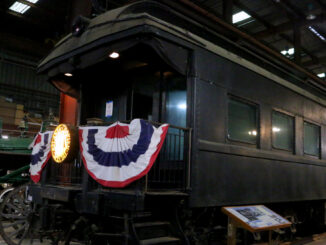DUNWOODY, Ga. — Retracing the Civil War in Dunwoody can be rather boring. After all, not much happened here.
In the 1860s, Dunwoody — or Providence as the area was then named — was little more than a crossroads.
The only major event – if that’s even the right word to describe it – that transpired in Dunwoody during the Civil War took place on July 17, 1864, when union troops under the command of Gen. James B. McPherson marched from Roswell to Decatur.
“The primary purpose of McPherson’s march to Decatur was to seize & destroy the Georgia Railroad between that place & Stone Mountain depot, nine miles N.E. of it,” according to a historical marker located at the intersection of Chamblee-Dunwoody Road and Nandina Lane.
According to the writings of Jim Perkins, the one-time unofficial historian of Dunwoody, the 20,000 union soldiers who passed through the area far outnumbered the number of residents, meaning the march through the crossroads was apparently uneventful.
In Dunwoody, the federal troops split into two groups — one continued along what is today Chamblee-Dunwoody Road and the other continued along what is today Ashford-Dunwoody Road, according to Perkins. The group that marched along Ashford-Dunwoody Road skirmished with Confederate Col. George Gibbs Dibrell’s brigade at nearby Nancy Creek near the current location of Marist School.
While no battles took place in Dunwoody, Confederate soldiers are buried in the cemeteries at Ebenezer Primitive Baptist Church and the former location of New Hope Presbyterian Church.





